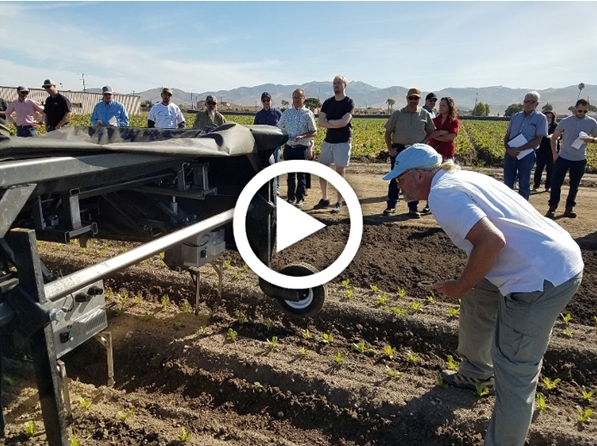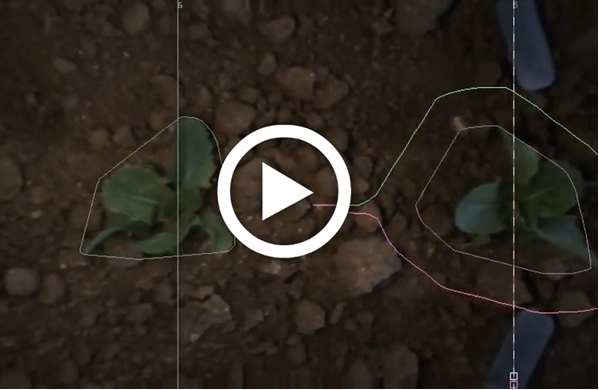
Rapidly changing conditions are a common feature in the agricultural arena. Things are in a constant state of flux in terms of climate, economics, methods of operation, etc. However, in the past few years, principally during the pandemic and post-pandemic times, changing conditions in agriculture for the desert Southwest have been extremely rapid and substantial.
Supply chain issues have been disruptive to many sectors of the economy and that has certainly affected agricultural operations. Things that have commonly been standard or easy things to manage in the past such as the simple need of replacing equipment or parts have become complicated and expensive.
We have become aware of fragile supply chains and the exposure of single points of failure that can have huge domino effects in many facets of our society, including agricultural industries. For example, during the pandemic it cost nearly $40,000 to move a shipping container from Asia to the U.S. and now things are starting to catch up and it has been reported that containers can now be shipped from Asia to the U.S. for less than $3,000.00.
Fertilizer prices for many materials have more than doubled in recent years, primarily due to basic supply and demand pressures. Fertilizer supplies have been subject basic economic pressures and further exacerbated by the war in Ukraine and the associated changes in natural gas supplies.
Fertilizer Supply and Cost
In a recent report from DTN market analysis (Formerly: Telvent DTN, Data Transmission Network) for the second week of November, retail U.S. fertilizer prices were not substantially different than in October but did have some slight variations with five fertilizers showing marginally lower prices than in October and three other key fertilizers tracking slightly higher. It is important to note that DTN designates a “significant” difference in prices with a move of 5% or more.
The five fertilizers that were marginally lower in price included monoammonium phosphate (MAP), potash, urea, 10-34-0, and anhydrous ammonia. Di-ammonium phosphate (DAP), urea ammonium nitrate (UAN)-28, and UAN-32 were slightly higher in price in mid-November, Table 1. Costs per pound of nitrogen (N) is shown for primary N sources in Table 2.
|
MAP |
Potash |
Urea |
10-34-0 |
Anhydrous |
DAP |
UAN-28 |
UAN-32 |
|
$978 |
$848 |
$812 |
$753 |
$1,415 |
$930 |
$584 |
$681 |
Table 1. Mid-November retail prices in U.S. markets for several fertilizers. Source: DTN
|
Anhydrous Ammonia |
UAN-28 |
UAN-32 |
|
$0.88 |
$1.04 |
$1.06 |
I hope you are frolicking in the fields of wildflowers picking the prettiest bugs.
I was scheduled to interview for plant pathologist position at Yuma on October 18, 2019. Few weeks before that date, I emailed Dr. Palumbo asking about the agriculture system in Yuma and what will be expected of me. He sent me every information that one can think of, which at the time I thought oh how nice!
When I started the position here and saw how much he does and how much busy he stays, I was eternally grateful of the time he took to provide me all the information, especially to someone he did not know at all.
Fast forward to first month at my job someone told me that the community wants me to be the Palumbo of Plant Pathology and I remember thinking what a big thing to ask..
He was my next-door mentor, and I would stop by with questions all the time especially after passing of my predecessor Dr. Matheron. Dr. Palumbo was always there to answer any question, gave me that little boost I needed, a little courage to write that email I needed to write, a rigid answer to stand my ground if needed. And not to mention the plant diagnosis. When the submitted samples did not look like a pathogen, taking samples to his office where he would look for insects with his little handheld lenses was one of my favorite times.
I also got to work with him in couple of projects, and he would tell me “call me John”. Uhh no, that was never going to happen.. until my last interaction with him, I would fluster when I talked to him, I would get nervous to have one of my idols listening to ME? Most times, I would forget what I was going to ask but at the same time be incredibly flabbergasted by the fact that I get to work next to this legend of a man, and get his opinions about pest management. Though I really did not like giving talks after him, as honestly, I would have nothing to offer after he has talked. Every time he waved at me in a meeting, I would blush and keep smiling for minutes, and I always knew I will forever be a fangirl..
Until we meet again.
As mentioned in a previous article, last month at the UC Cooperative Extension Automated Technology Field Day in Salinas, CA, several automated technologies were showcased operating in the field for the first time to a general audience. One of the “new” machines designed specifically for in-row weeding in vegetable crops was discussed previously, a second is highlighted here.
Vision Robotics1 (https://www.visionrobotics.com/) demoed an innovative mechanical in-row weeding machine (Fig. 1). As with most other automated weeding machines currently on the market, in-row weeds are controlled with knife blades that cycle in and out of the crop row. Each knife blade however is controlled independently by an electric motor rather than in coupled pairs. Another feature is that the imaging system calculates a prescribed path for the blades to follow based on a contour of the crop plant and a user defined offset distance from the contour (Fig. 2) Because electric motors are used, blade position can be continuously and precisely controlled, thus facilitating close cultivation.
In the demo, the prototype seemed to work pretty well, but the run was short, and it was difficult to fully evaluate its performance. The video they shared of their imaging system with path planning and blade movement operating in real time impressed and showed good promise (Fig. 2). The innovation was recently patented, and the company is planning commercial units for interested customers.
Developments such as these are worth investigating as our and other researchers’ studies have shown that automated in-row weeding machines control about 50-66% of the in-row weeds, and the majority of uncontrolled weeds were observed to be close to the crop plant (Lati et al., 2016; Mosqueda et al., 2021).
References
Lati, R.N, Siemens, M.C., Rachuy, J.S. & Fennimore, S.A. (2016). Intrarow Weed Removal in Broccoli and Transplanted Lettuce with an Intelligent Cultivator. Weed Technology, 30(3), 655-663.
Mosqueda, E., Smith, R. & Fennimore, S. 2021. 2020 Evaluations of automated weeders in lettuce production. ANR Blogs. Davis, Calif.: University of California Davis. Available at: https://ucanr.edu/blogs/blogcore/postdetail.cfm?postnum=45566.
Acknowledgements
A special thank you to Tony Koselka, Vision Robotics Inc., for uploading the videos referenced in this article.
____________________
[1] Reference to a product or company is for specific information only and does not endorse or recommend that product or company to the exclusion of others that may be suitable.

Fig. 1. Prototype in-row weeding machine developed by Vision Robotics1 demonstration at UCCE Automated Technologies Field Day. Clear here or on the image to view the machine in action.

Fig. 2. Plant contour and cultivating blade path planning of prototype in-row weeding machine developed by Vision Robotics1. A contour of the crop plant is traced (left) and a prescribed path a user defined distance from this contour (right) is determined for the blade tips to follow. Clear here or on the image to view the system in action.